-
 Bitcoin
Bitcoin $101,898.5005
-0.75% -
 Ethereum
Ethereum $2,258.1125
-1.07% -
 Tether USDt
Tether USDt $1.0004
0.01% -
 XRP
XRP $2.0178
-2.93% -
 BNB
BNB $624.0243
-1.53% -
 Solana
Solana $134.3298
-0.90% -
 USDC
USDC $0.9999
0.01% -
 TRON
TRON $0.2675
-2.05% -
 Dogecoin
Dogecoin $0.1538
-1.96% -
 Cardano
Cardano $0.5482
-1.11% -
 Hyperliquid
Hyperliquid $35.5636
5.45% -
 Bitcoin Cash
Bitcoin Cash $453.4902
-1.66% -
 Sui
Sui $2.5134
-2.97% -
 UNUS SED LEO
UNUS SED LEO $9.1292
1.77% -
 Chainlink
Chainlink $11.8457
-1.60% -
 Stellar
Stellar $0.2312
-2.73% -
 Avalanche
Avalanche $16.9721
0.29% -
 Toncoin
Toncoin $2.7549
-3.82% -
 Shiba Inu
Shiba Inu $0.0...01081
-1.10% -
 Litecoin
Litecoin $80.8250
-0.71% -
 Hedera
Hedera $0.1374
0.21% -
 Monero
Monero $305.4827
-2.36% -
 Ethena USDe
Ethena USDe $1.0006
0.00% -
 Dai
Dai $1.0000
-0.01% -
 Polkadot
Polkadot $3.2085
-3.12% -
 Bitget Token
Bitget Token $4.0845
-3.13% -
 Uniswap
Uniswap $6.3353
-1.63% -
 Pi
Pi $0.5085
-0.70% -
 Pepe
Pepe $0.0...08913
-3.82% -
 Aave
Aave $232.7090
-0.58%
What does WR bottoming out multiple times mean? Is WR continuous top divergence dangerous?
WR bottoming out multiple times signals persistent bearish pressure, but it may also indicate a potential reversal if selling exhausts.
May 24, 2025 at 04:29 am
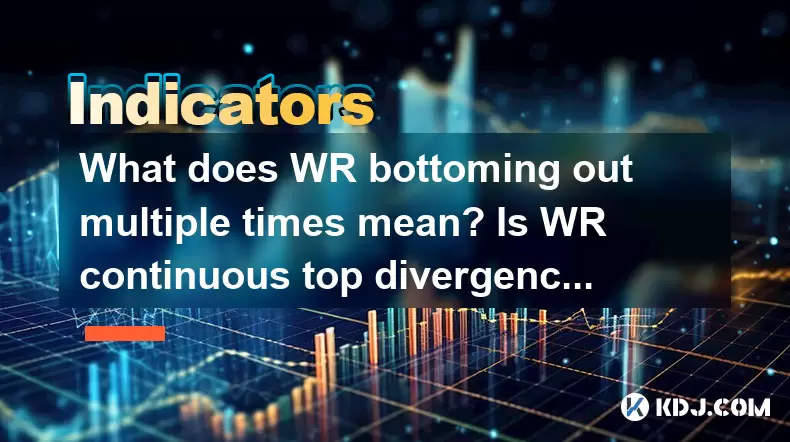
What Does WR Bottoming Out Multiple Times Mean?
When discussing the Williams %R (WR) indicator, bottoming out multiple times refers to a scenario where the WR repeatedly reaches its oversold level without a significant recovery. The Williams %R is a momentum indicator that measures the level of the close relative to the high-low range over a given period, typically 14 days. A reading of -100 indicates that the closing price was at the lowest point of the range, signaling an oversold condition.
When the WR bottoms out multiple times, it suggests that the asset is experiencing persistent downward pressure, and buyers are unable to push the price up to a level where the WR can move out of the oversold territory. This can be a signal of strong bearish sentiment in the market. However, it is also a potential indication that the market might be due for a reversal if the selling pressure eventually exhausts itself.
To identify this pattern, traders should:
- Monitor the WR indicator on their chosen timeframe.
- Look for instances where the WR repeatedly touches or goes below the -80 level, which is typically considered the oversold threshold.
- Observe the price action on the chart to see if the asset's price is also showing signs of bottoming out or forming a potential reversal pattern.
Is WR Continuous Top Divergence Dangerous?
Continuous top divergence on the Williams %R indicator occurs when the asset's price continues to make higher highs, but the WR indicator fails to confirm these highs by making lower highs. This type of divergence can be a warning sign that the current upward trend might be losing momentum and could be at risk of a reversal.
The danger of continuous top divergence lies in the fact that it can signal an impending correction or a more significant downturn. When the WR fails to reach new highs alongside the price, it suggests that the buying momentum is weakening, and sellers might soon take control. This can lead to a sharp decline in price if enough market participants act on this signal.
To identify continuous top divergence, traders should:
- Observe the price chart for a series of higher highs.
- Compare these highs with the corresponding highs on the WR indicator.
- Note any instances where the WR fails to make higher highs in sync with the price, indicating divergence.
How to Use WR Bottoming Out Multiple Times in Trading
Using WR bottoming out multiple times in trading involves recognizing the potential for a reversal and positioning trades accordingly. Here are some steps to consider:
- Identify the pattern: Look for multiple instances where the WR hits the oversold level (-80 or lower) without significant recovery.
- Confirm with price action: Check if the price is also showing signs of bottoming out, such as forming a double bottom or other reversal patterns.
- Set entry points: Consider entering a long position when the WR begins to rise from the oversold level, especially if confirmed by a bullish price pattern.
- Set stop-losses: Place stop-loss orders below the recent lows to manage risk.
- Monitor for follow-through: Ensure that the price follows through with the expected upward move after the WR exits the oversold zone.
How to Use WR Continuous Top Divergence in Trading
Using WR continuous top divergence in trading involves preparing for potential reversals and adjusting trading strategies accordingly. Here are some steps to consider:
- Identify the divergence: Look for instances where the price makes higher highs, but the WR fails to confirm these highs.
- Confirm with other indicators: Use other technical indicators, such as the RSI or MACD, to confirm the weakening momentum.
- Set entry points: Consider entering a short position when the price shows signs of reversing from the high, especially if confirmed by bearish price patterns.
- Set stop-losses: Place stop-loss orders above the recent highs to manage risk.
- Monitor for follow-through: Ensure that the price follows through with the expected downward move after the divergence is confirmed.
Practical Example of WR Bottoming Out Multiple Times
To illustrate WR bottoming out multiple times, consider a scenario where Bitcoin (BTC) is experiencing a prolonged downtrend. On the daily chart, the WR repeatedly touches the -100 level over several weeks without moving above -80. This indicates that BTC is consistently closing near its daily lows, signaling strong bearish pressure.
- Observation: The WR repeatedly hits -100, indicating persistent oversold conditions.
- Price action: The price chart shows BTC forming a potential double bottom pattern.
- Trade setup: A trader might wait for the WR to rise above -80 and the price to break above the double bottom's neckline before entering a long position.
- Risk management: The stop-loss could be set below the recent lows, ensuring the trade is protected against further downside.
Practical Example of WR Continuous Top Divergence
To illustrate WR continuous top divergence, consider a scenario where Ethereum (ETH) is in an uptrend. On the daily chart, ETH makes a series of higher highs, but the WR fails to reach new highs, instead forming lower highs.
- Observation: The WR shows lower highs while the price of ETH continues to make higher highs.
- Price action: The price chart shows ETH reaching new highs, but the momentum seems to be waning.
- Trade setup: A trader might wait for the price to show signs of reversing from the high, such as a bearish candlestick pattern, before entering a short position.
- Risk management: The stop-loss could be set above the recent highs, ensuring the trade is protected against a continuation of the uptrend.
Frequently Asked Questions
Q1: Can WR bottoming out multiple times be a false signal?
A1: Yes, WR bottoming out multiple times can sometimes be a false signal. It's essential to confirm the signal with other technical indicators and price action patterns to increase the probability of a successful trade. False signals can occur if the market remains in a strong downtrend, and the WR repeatedly enters oversold territory without a reversal.
Q2: How long should I wait for confirmation after spotting WR continuous top divergence?
A2: The duration for waiting on confirmation after spotting WR continuous top divergence can vary. It's generally recommended to wait for at least one or two candlesticks to confirm the divergence with a bearish price pattern. However, some traders may choose to wait for a more significant price movement or additional confirmation from other indicators.
Q3: Are there specific timeframes where WR bottoming out multiple times is more reliable?
A3: WR bottoming out multiple times can be observed on various timeframes, but it tends to be more reliable on higher timeframes such as daily or weekly charts. These timeframes provide a broader perspective on market trends and are less susceptible to short-term noise and false signals.
Q4: Can WR continuous top divergence be used in conjunction with other indicators?
A4: Yes, WR continuous top divergence can be effectively used in conjunction with other indicators such as the RSI, MACD, or moving averages to increase the reliability of the signal. Combining multiple indicators can help traders confirm the divergence and make more informed trading decisions.
Disclaimer:info@kdj.com
The information provided is not trading advice. kdj.com does not assume any responsibility for any investments made based on the information provided in this article. Cryptocurrencies are highly volatile and it is highly recommended that you invest with caution after thorough research!
If you believe that the content used on this website infringes your copyright, please contact us immediately (info@kdj.com) and we will delete it promptly.
- BNB Price Check: Stablecoin Surge vs. Prediction Rollercoaster
- 2025-06-23 14:25:12
- Metaplanet's Bitcoin Bonanza: Holdings Skyrocket Amidst Market Swings
- 2025-06-23 14:25:12
- Global Meltdown, Investors, and Safe Havens: Navigating the Storm
- 2025-06-23 14:30:12
- NFT Sales Snapshot: Guild of Heroes, Polygon, and the Market's Shifting Sands
- 2025-06-23 15:25:12
- AVAX Support Holds, Eyes Potential Surge: What's Next?
- 2025-06-23 15:11:16
- Cointelegraph Under Fire: Exploits, Phishing, and the Crypto Media Minefield
- 2025-06-23 15:11:16
Related knowledge

How to read the sideways consolidation after the bottom volume and long positive line?
Jun 23,2025 at 02:28pm
Understanding the Sideways ConsolidationWhen analyzing cryptocurrency charts, sidewards consolidation refers to a phase where prices move within a narrow range without a clear upward or downward trend. This pattern often appears after significant price movements, such as a sharp increase followed by a period of equilibrium between buyers and sellers. In...
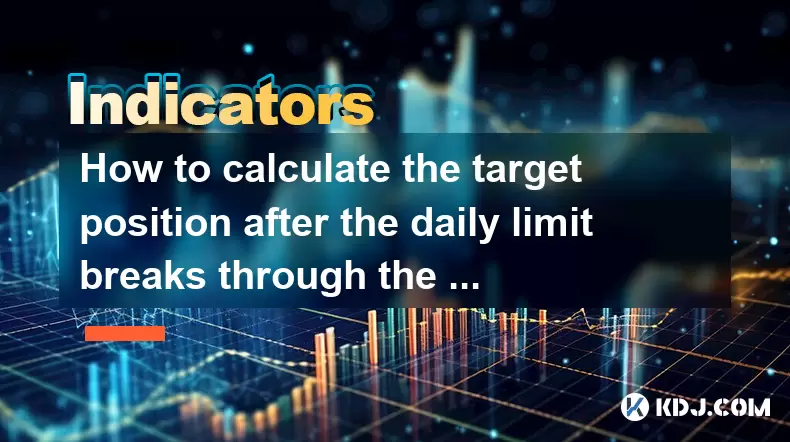
How to calculate the target position after the daily limit breaks through the previous high?
Jun 23,2025 at 02:57pm
Understanding the Daily Limit BreakthroughIn cryptocurrency trading, a daily limit typically refers to the maximum price movement allowed within a single trading day on certain exchanges. When this limit is breached, especially when it surpasses the previous high, traders often seek to calculate the target position or expected price movement following s...
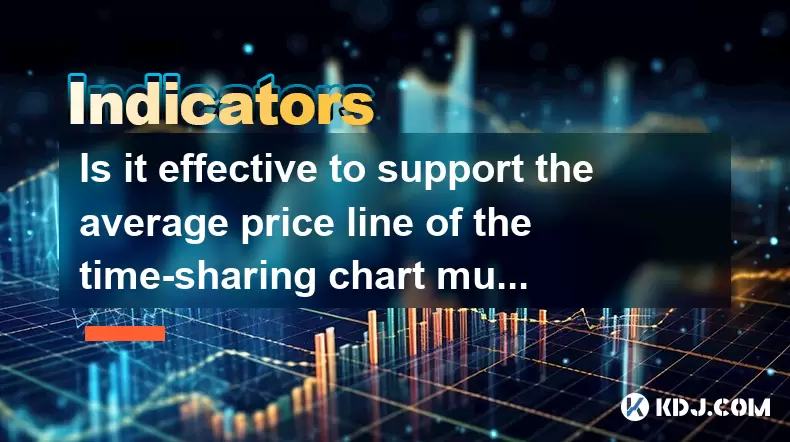
Is it effective to support the average price line of the time-sharing chart multiple times?
Jun 23,2025 at 01:36pm
Understanding the Average Price Line in Time-Sharing ChartsIn cryptocurrency trading, time-sharing charts refer to real-time price charts that display price movements over short intervals, often within a single trading day. Within these charts, the average price line, also known as the Volume Weighted Average Price (VWAP), is a commonly used technical i...
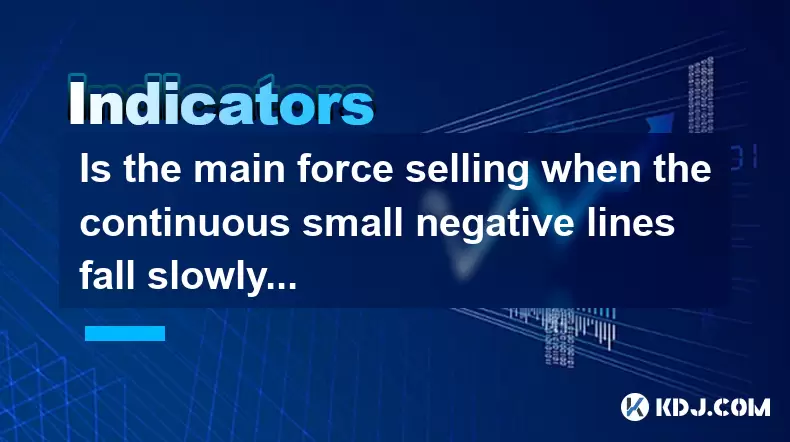
Is the main force selling when the continuous small negative lines fall slowly?
Jun 23,2025 at 03:35pm
Understanding Continuous Small Negative Lines in Cryptocurrency ChartsIn cryptocurrency trading, continuous small negative lines refer to a pattern where the price of an asset declines gradually over time with small bearish candlesticks. These candlesticks typically have short bodies and may or may not have wicks. This pattern often appears during perio...
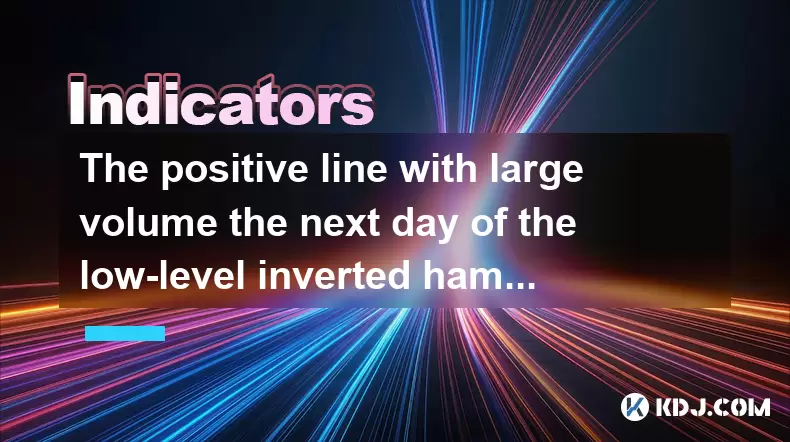
The positive line with large volume the next day of the low-level inverted hammer line confirms the reversal?
Jun 23,2025 at 01:21pm
Understanding the Low-Level Inverted Hammer LineThe inverted hammer line is a single candlestick pattern that typically appears at the end of a downtrend. It has a small real body near the bottom of the trading range and a long upper shadow, indicating that bulls attempted to push prices higher but were met with selling pressure. When this pattern forms...
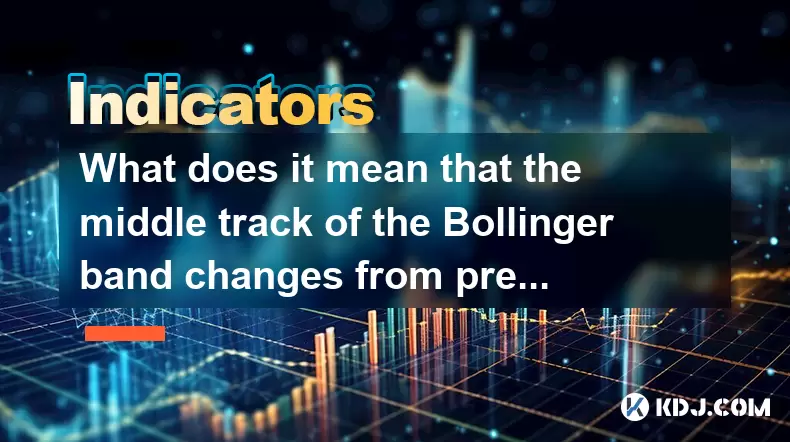
What does it mean that the middle track of the Bollinger band changes from pressure to support?
Jun 23,2025 at 03:01pm
Understanding the Bollinger Band StructureThe Bollinger Bands are a technical analysis tool used in cryptocurrency trading, developed by John Bollinger. They consist of three lines: a simple moving average (SMA) in the middle and two standard deviation bands above and below it. The middle track is typically set at 20 periods and serves as a baseline for...

How to read the sideways consolidation after the bottom volume and long positive line?
Jun 23,2025 at 02:28pm
Understanding the Sideways ConsolidationWhen analyzing cryptocurrency charts, sidewards consolidation refers to a phase where prices move within a narrow range without a clear upward or downward trend. This pattern often appears after significant price movements, such as a sharp increase followed by a period of equilibrium between buyers and sellers. In...

How to calculate the target position after the daily limit breaks through the previous high?
Jun 23,2025 at 02:57pm
Understanding the Daily Limit BreakthroughIn cryptocurrency trading, a daily limit typically refers to the maximum price movement allowed within a single trading day on certain exchanges. When this limit is breached, especially when it surpasses the previous high, traders often seek to calculate the target position or expected price movement following s...

Is it effective to support the average price line of the time-sharing chart multiple times?
Jun 23,2025 at 01:36pm
Understanding the Average Price Line in Time-Sharing ChartsIn cryptocurrency trading, time-sharing charts refer to real-time price charts that display price movements over short intervals, often within a single trading day. Within these charts, the average price line, also known as the Volume Weighted Average Price (VWAP), is a commonly used technical i...

Is the main force selling when the continuous small negative lines fall slowly?
Jun 23,2025 at 03:35pm
Understanding Continuous Small Negative Lines in Cryptocurrency ChartsIn cryptocurrency trading, continuous small negative lines refer to a pattern where the price of an asset declines gradually over time with small bearish candlesticks. These candlesticks typically have short bodies and may or may not have wicks. This pattern often appears during perio...

The positive line with large volume the next day of the low-level inverted hammer line confirms the reversal?
Jun 23,2025 at 01:21pm
Understanding the Low-Level Inverted Hammer LineThe inverted hammer line is a single candlestick pattern that typically appears at the end of a downtrend. It has a small real body near the bottom of the trading range and a long upper shadow, indicating that bulls attempted to push prices higher but were met with selling pressure. When this pattern forms...

What does it mean that the middle track of the Bollinger band changes from pressure to support?
Jun 23,2025 at 03:01pm
Understanding the Bollinger Band StructureThe Bollinger Bands are a technical analysis tool used in cryptocurrency trading, developed by John Bollinger. They consist of three lines: a simple moving average (SMA) in the middle and two standard deviation bands above and below it. The middle track is typically set at 20 periods and serves as a baseline for...
See all articles
























































































